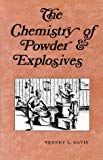Written by: The Lich
This explosive is a phenol dirivative. It is toxic and explosive compounds made from picric acid are poisonous if inhaled, ingested, or handled and absorbed through the skin. The toxicity of this explosive restrict’s its use due to the fact that over exposure in most cases causes liver and kidney failure and sometimes death if immediate treatment is not obtained.
This explosive is a cousin to T.N.T. but is more powerful than it’s cousin. It is the first explosive used militarily and was adopted in 1888 as an artillery shell filler. Originally this explosive was derived from coal tar but thanx to modern chemistry you can make this explosive easily in approximately three hours from acetylsalicylic acid (aspirin purified).
This procedure involves dissolving the acetylsalicylic acid in warm sulfuric acid and adding sodium or potassium nitrate which nitrates the purified aspirin and the whole mixture drowned in water and filtered to obtain the final product. This explosive is called trinitrophenol. Care should be taken to ensure that this explosive is stored in glass containers. Picric acid will form dangerous salts when allowed to contact all metals exept tin and aluminum. These salts are primary explosive and are super sensitive. They also will cause the detonation of the picric acid.
To make picric acid obtain some aspirin. The cheaper brands work best but buffered brands should be avoided. Powder these tablets to a fine consistancy. To extract the acetylsalicylic acid from this powder place this powder in methyl alcohol and stir vigorously. Not all of the powder will dissolve. Filter this powder out of the alcohol. Again wash this powder that was filtered out of the alcohol with more alcohol but with a lesser amount than the first extraction. Again filter the remaining powder out of the alcohol. Combine the now clear alcohol and allow it to evaporate in a pyrex dish. When the alcohol has evaporated there will be a surprising amount of crystals in the bottom of the pyrex dish.
Take fourty grams of these purified acetylsalicylic acid crystals and dissolve them in 150 ml. of sulfuric acid (98%, specify gravity 1.8) and heat to dissolve all the crystals. This heating can be done in a common electric frying pan with the thermostat set on 150 deg. F. and filled with a good cooking oil. When all the crystals have dissolved in the sulfuric acid take the beaker, that you’ve done all this dissolving in (600 ml.), out of the oil bath. This next step will need to be done with a very good ventilation system (it is a good idea to do any chemistry work such as the whole procedure and any procedure on this disk with good ventilation or outside). Slowly start adding 58 g. of sodium nitrate or 77 g. of potassium nitrate to te acid mixture in the beaker very slowly in small portions with vigorous stirring. A red gas (nitrogen trioxide) will be formed and this should be avoided. The mixture is likely to foam up and the addition should be stopped until the foaming goes down to prevent the overflow of the acid mixture in the beaker. When the sodium or potassium nitrate has been added the mixture is allowed to cool somewhat (30- 40 deg. C.). The solution should then be dumped slowly into twice it’s volume of crushed ice and water. The brilliant yellow crystals will form in the water. These should be filtered out and placed in 200 ml. of boiling distilled water. This water is allowed to cool and then the crystals are then filtered out of the water. These crystals are a very, very pure trinitrophenol. These crystals are then placed in a pyrex dish and places in an oil bath and heated to 80 deg. C. and held there for 2 hours. This temperature is best maintained and checked with a thermometer. The crystals are then powdered in small quantities to a face powder consistency. These powdered crystals are then mixed with 10% by weight wax and 5% vaseline which are heated to melting temperature and poured into the crystals. The mixing is best done by kneading together with gloved hands. This explosive should have a useful plsticity range of 0-40 deg. C.. The detonation velocity should be around 7000 m/sec.. It is toxic to handle but simply made from common ingredients and is suitable for most demolition work requiring a moderately high detonation velocity. It is very suitable for shaped charges and some steel cutting charges. It is not as good an explosive as C-4 or other R.D.X. based explosives but it is much easier to make. Again this explosive is very toxic and should be treated with great care.
Avoid handling bare-handed, breathing dust and fumes, avoid any chance of ingestion. After utensils are used for the manufacture of this explosive retire them from the kitchen as the chance of poisoning is not worth the risk. This explosive, if manufactured as above, should be safe in storage but with any homemade explosive storage is not recomended and explosives should be made up as needed.



